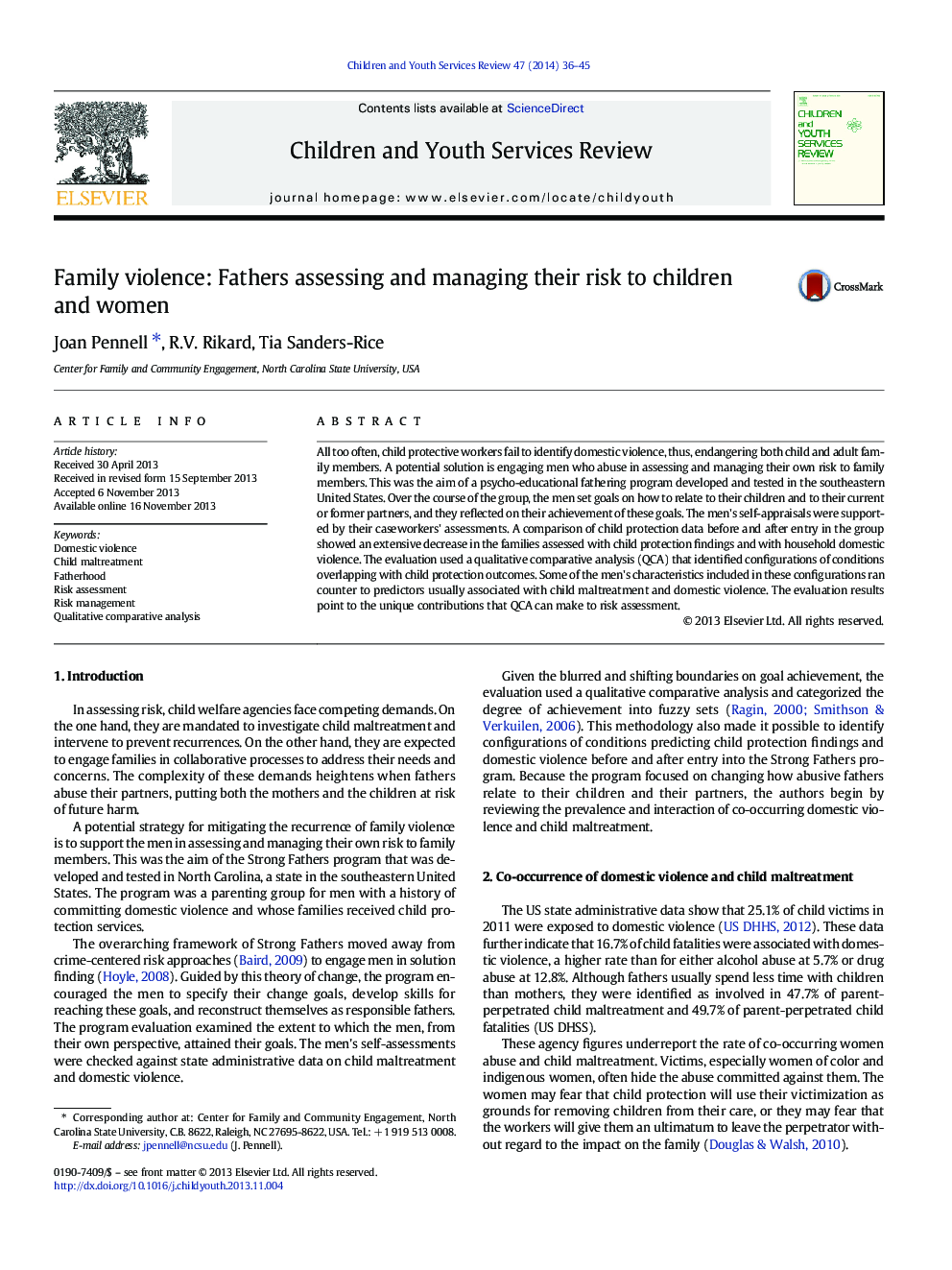| Article ID | Journal | Published Year | Pages | File Type |
|---|---|---|---|---|
| 346043 | Children and Youth Services Review | 2014 | 10 Pages |
•The men in the fathering program set goals and assessed goal achievement.•The men's self-appraisals were supported by child protection data.•Child protection findings and household domestic violence greatly decreased.•Qualitative comparative analysis (QCA) identified configurations of predictors.•QCA can contribute to risk assessment of domestic violence and child maltreatment.
All too often, child protective workers fail to identify domestic violence, thus, endangering both child and adult family members. A potential solution is engaging men who abuse in assessing and managing their own risk to family members. This was the aim of a psycho-educational fathering program developed and tested in the southeastern United States. Over the course of the group, the men set goals on how to relate to their children and to their current or former partners, and they reflected on their achievement of these goals. The men's self-appraisals were supported by their caseworkers' assessments. A comparison of child protection data before and after entry in the group showed an extensive decrease in the families assessed with child protection findings and with household domestic violence. The evaluation used a qualitative comparative analysis (QCA) that identified configurations of conditions overlapping with child protection outcomes. Some of the men's characteristics included in these configurations ran counter to predictors usually associated with child maltreatment and domestic violence. The evaluation results point to the unique contributions that QCA can make to risk assessment.
